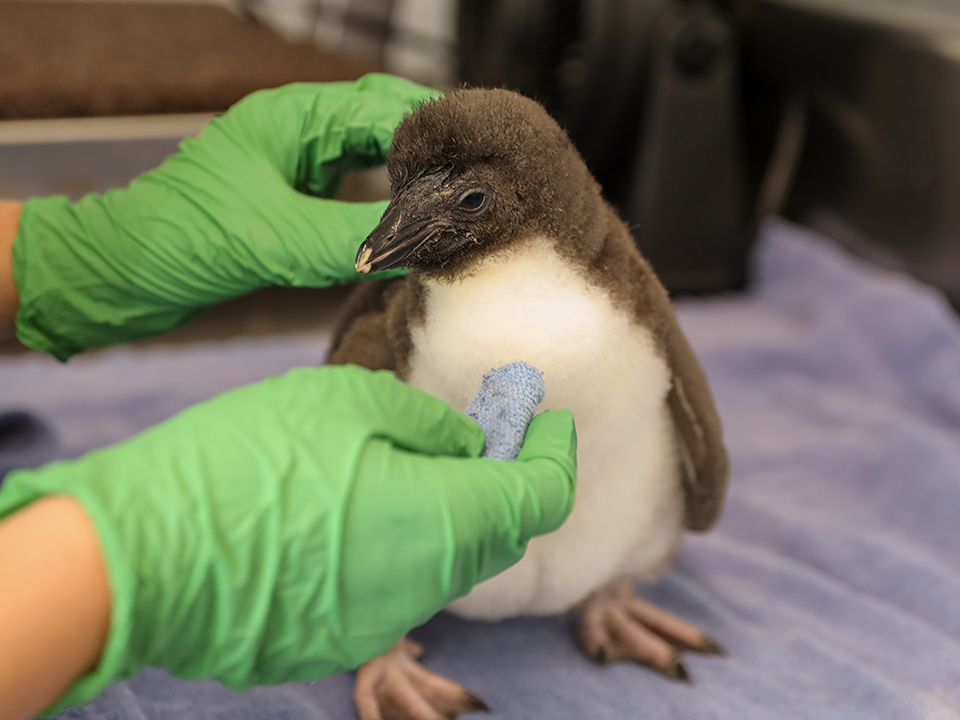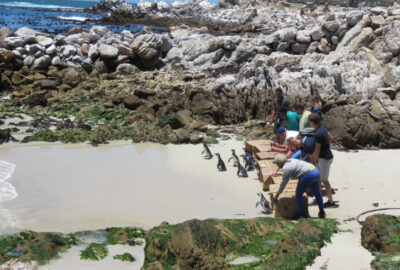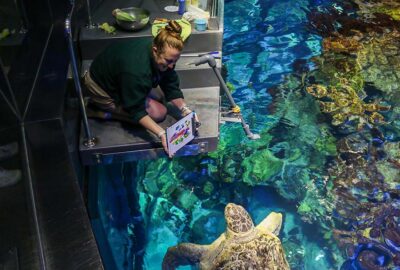Please note: We strongly recommend purchasing tickets online in advance during the heat wave, as our ticket booth is located outdoors.
Welcoming a New Southern Rockhopper Chick
A southern rockhopper penguin recently hatched at the Aquarium. Learn more about the chick from Assistant Curator of Penguins Eric Fox.
By New England Aquarium on Wednesday, August 02, 2023

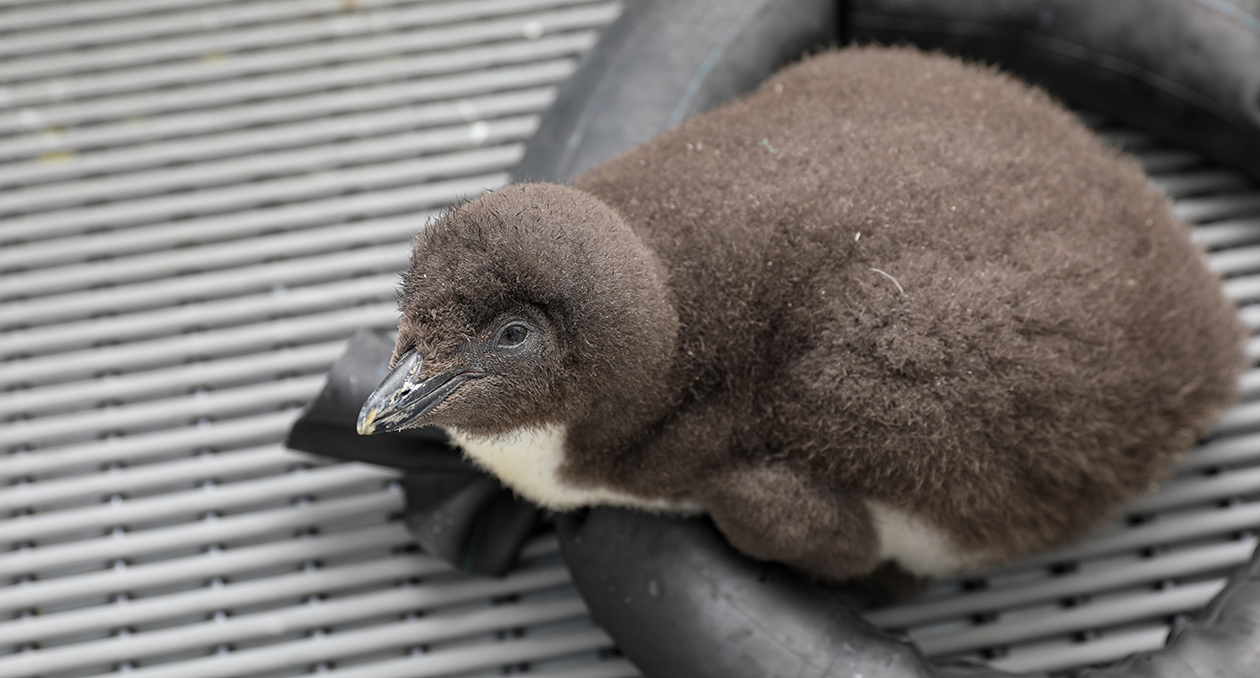
More than 50 African and southern rockhopper penguins reside at the New England Aquarium, and recently, the population of penguins just got bigger. On June 23, a southern rockhopper penguin hatched at the Aquarium, in addition to the young African penguin chick named Bray that hatched earlier this year.
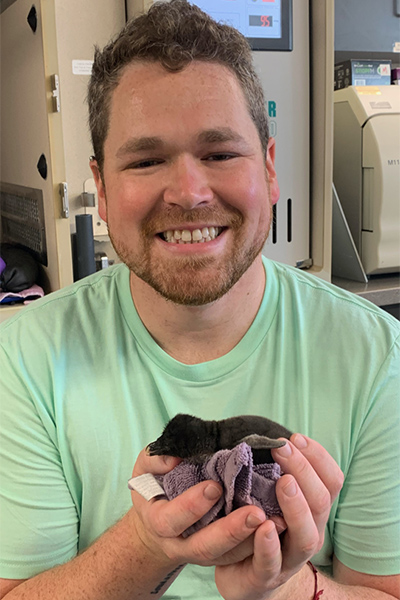
Southern rockhopper penguins are foragers that nest on rocky shores off of Chile, Argentina, and the Falkland Islands. Unfortunately, the population of these small-bodied animals with bright orange beaks is vulnerable. Over the past three to four decades, their numbers have dropped by about 35 percent due to climate change and the associated warming of the ocean surrounding their habitats.
To help, the Aquarium participates in the Association of Zoos & Aquariums’ Species Survival Plan, which aims to produce a genetically diverse and sustainable population. The birth of this penguin is part of a breeding program at the Aquarium, which was developed due to SSP recommendations.
When this soon-to-be-named penguin hatched, it struggled to break out of its egg and spent some time in the Aquarium’s ICU. Assistant Curator of Penguins Eric Fox, along with the Penguins Team and Animal Health Department all joined forces to provide round-the-clock-care for the first few days to ensure the penguin’s safe arrival and offer some extended care.
Here, Fox shares more about this penguin’s journey.
Can you talk a little about the hatching of this penguin?
Just like with African penguins, we are part of the species survival plan for southern rockhopper penguins. So the recommendation to breed was in part based on that.
When we noticed it was hatching out of the egg, it had made a strong pip hole, which was the first sign that [she was] hatching, but there wasn’t much progress after that point. So, we waited to give the chick a chance to succeed on its own. Then, when the progress slowed, in communication with our vet team, we eventually decided to intervene.
When you talk of intervening or assisting the hatch, what does that entail?
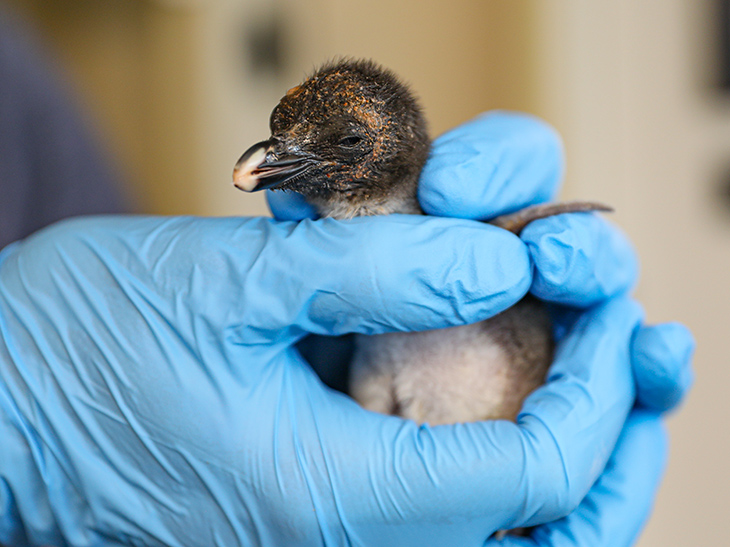
Usually, an egg can take 24 to 48 hours to hatch. But we weren’t seeing much progress from the chick. To help, our veterinarians carefully peeled back the outer eggshell. Underneath that is a sort of membrane the chick has been enclosed in, which is integrated with blood vessels. So you can’t peel that back right away because that can cause harm to the chick. You must do it in slow steps, wherever the egg itself seems to be ready to be peeled back. It was a complicated process. [Generally,] when we see eggs and chicks emerge on their own, they make a hole, then a bigger hole, and they’re out.
Does this chick have a name yet?
It does not have a name yet. But we found out the sex earlier than we usually do since we were able to send out some of the remains of the amniotic sac for testing. So it is a female. It was exciting to know that a little bit earlier on. We usually don’t name chicks until they approach fully fledged.
What type of care does the chick receive?
In the early stages, we fed the chick five times a day, every three hours over a 12-hour span. This includes hydration and formula. The formula is basically a milkshake of fish, krill, and many different vitamin supplements. We were able to get it eating from us rather quickly by drop-feeding the formula through a tube. And it was only a few days later that it started soliciting from us and letting us know that…we were the source of food and could provide the care it needed.
Now, we’re at three feedings a day and starting to move past the formula stage. And starting to really get it prepared to eat whole fish as an adult does. So we’ll probably be at that stage within the next week. It’s exciting and lets us know that the chick is graduating to some bigger milestones and thriving. We still have to ask ourselves why it wasn’t equipped to come out of the egg unassisted and continue to be cautious with everything we’re doing with it to make sure that we’re giving her the best chance to continue to succeed.
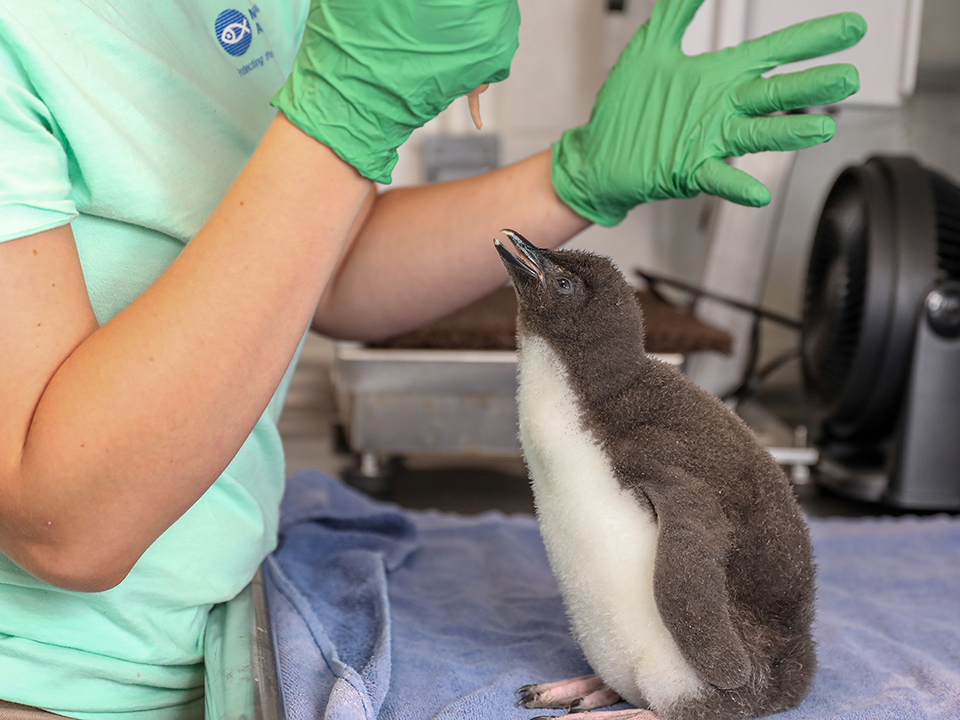
When will it go on exhibit?
I would say that we’re still looking right around that 75-day mark to start those introductions because it’s usually right around then that they are fully fledged. This is when the chick will molt its downy feather coat and replace it with a waterproof coat of feathers. That’ll be considered its juvenile plumage. Then once it has its juvenile plumage, we would start doing those slow introductions into the exhibit. In general, right around when the chick is three months of age, we will be doing a full introduction.
